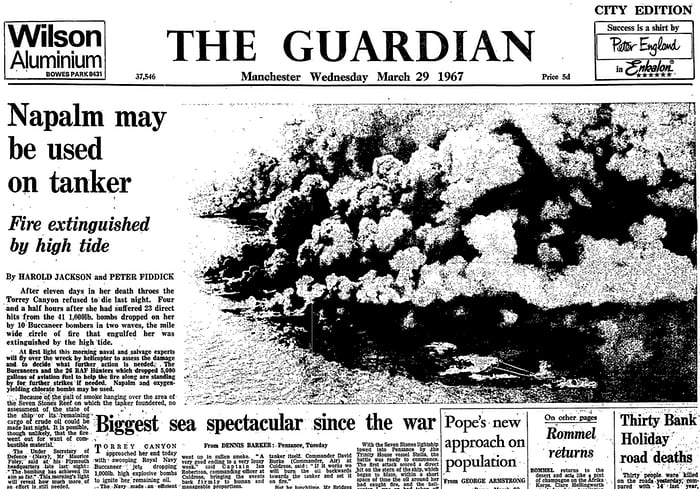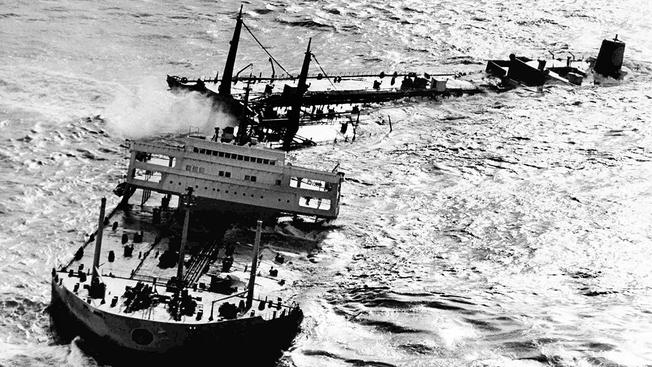MARPOL – International Convention for the Prevention of Pollution from Ships

MARPOL International Convention for the Prevention of Pollution from Ship – Overview
Introduction:
- Although marine pollution has a long history, meaningful and effective international laws to counter it were only enacted during the twentieth century. At that time, it was believed that the oceans were so vast that they had unlimited ability to dilute and thus render pollution harmless.
- The main types of pollution which are caused by ships specifically are Oil Pollution, Toxic waste, harmful substances carried in packages, sewage discharging, by the disposal of garbage and the air pollution.
Why MARPOL?
- In order to address these harmful situations, the International Convention for the prevention of pollution of the sea by oil ,1954 (OILPOL) was held.
- The 1967 Torrey Canyon accident was the catalyst for the adoption of the MARPOL convention. It was the biggest oil tanker spill recorded as the time, which led to the creation of devoted subcommittee on pollution from ships at IMO (MEPC) and the development and adoption of MARPOL
In 1973, IMO convened a major conference to discuss the whole problem of marine pollution by ships. It resulted in the adoption of the first ever comprehensive anti-pollution convention, the International Convention for the prevention of pollution from ships (MARPOL) covering prevention of pollution of the marine environment by ships from operational or accidental causes. Its objective was to minimize pollution of the oceans and seas and preserve the marine environment.
Owing to number of tanker accidents, in 1978, IMO convened a conference on Tanker safety & Pollution Prevention, which adopted a protocol to the 1973 MARPOL conventions introducing further and stricter measures. This combined instrument is commonly referred to as a MARPOL 73/78 and came into effect in October 1983.
MARPOL Annexes
- The MARPOL 73/78 convention contains six technical annexes which cover numerous aspects relevant to the prevention of marine pollution. Most annexes appoint special areas where for recognised technical reasons in relation to its oceanographic and ecological condition and to the particular character of its traffic, special mandatory methods for the prevention of sea pollution are required.
Annex I: Regulations for the Prevention of Pollution by Oil (entered into force 2 October 1983)
It covers prevention of pollution by oil from operational measures as well as from accidental discharges. The 1992 amendments to Annex I made it mandatory for new oil tankers to have double hulls and brought in a phase-in schedule for existing tankers to fit double hulls, which was subsequently revised in 2001 and 2003.
Annex II: Regulations for the Control of Pollution by Noxious Liquid Substances in Bulk (entered into force 2 October 1983)
It details the discharge criteria and measures for the control of pollution by noxious liquid substances carried in bulk. Some 250 substances were evaluated and included in the list appended to the Convention. The discharge of their residues is allowed only to reception facilities until certain concentrations and conditions (which vary with the category of substances) are complied with.
In any case, no discharge of residues containing noxious substances is permitted within 12 miles of the nearest land.
Annex III Prevention of Pollution by Harmful Substances Carried by Sea in Packaged Form (entered into force 1 July 1992)
It contains general requirements for the issuing of detailed standards on packing, marking, labelling, documentation, stowage, quantity limitations, exceptions and notifications.
For the purpose of this Annex, “harmful substances” are those substances which are identified as marine pollutants in the International Maritime Dangerous Goods Code (IMDG Code) or which meet the criteria in the Appendix of Annex III.
Annex IV Prevention of Pollution by Sewage from Ships (entered into force 27 September 2003)
It contains requirements to control pollution of the sea by sewage. The discharge of sewage into the sea is prohibited, except when the ship has in operation an approved sewage treatment plant or when the ship is discharging comminuted and disinfected sewage using an approved system at a distance of more than three nautical miles from the nearest land. Sewage which is not comminuted or disinfected has to be discharged at a distance of more than 12 nautical miles from the nearest land.
Annex V Prevention of Pollution by Garbage from Ships (entered into force 31 December 1988)
It deals with different types of garbage and specifies the distances from land and the manner in which they may be disposed of. The most important feature of the Annex is the complete ban imposed on the disposal into the sea of all forms of plastics.
Annex VI Prevention of Air Pollution from Ships (entered into force 19 May 2005)
It sets limits on sulphur oxide and nitrogen oxide emissions from ship exhausts and prohibits deliberate emissions of ozone depleting substances. Designated emission control areas set more stringent standards for SOx, NOx and particulate matter. A chapter adopted in 2011 covers mandatory technical and operational energy efficiency measures aimed at reducing greenhouse gas emissions from ships.
Bibliography
- imo.org
- MARPOL
- wikipedia.org
- itopf.com
- The History of Marpol by ΕΓΚΩΜΙΤΗΣ ΜΑΡΙΝΟΣ – ΣΤΟΙΤΣΗ ΓΙΟΛΑΝΤΑ-ΑΛΕΞΙΑ





